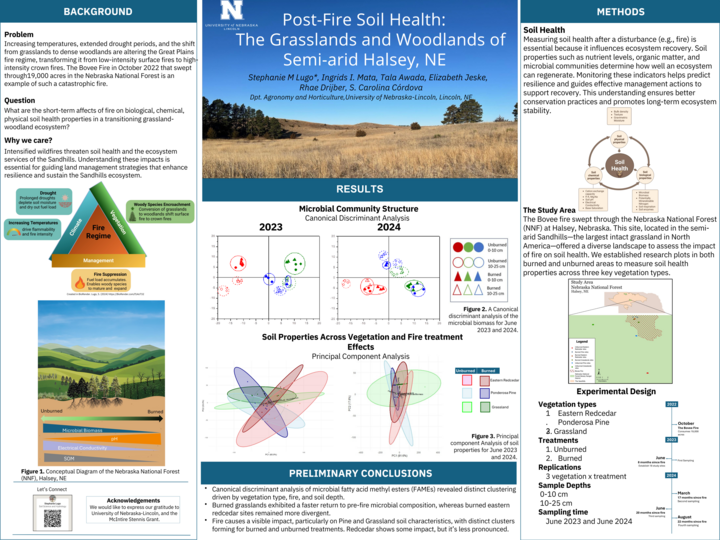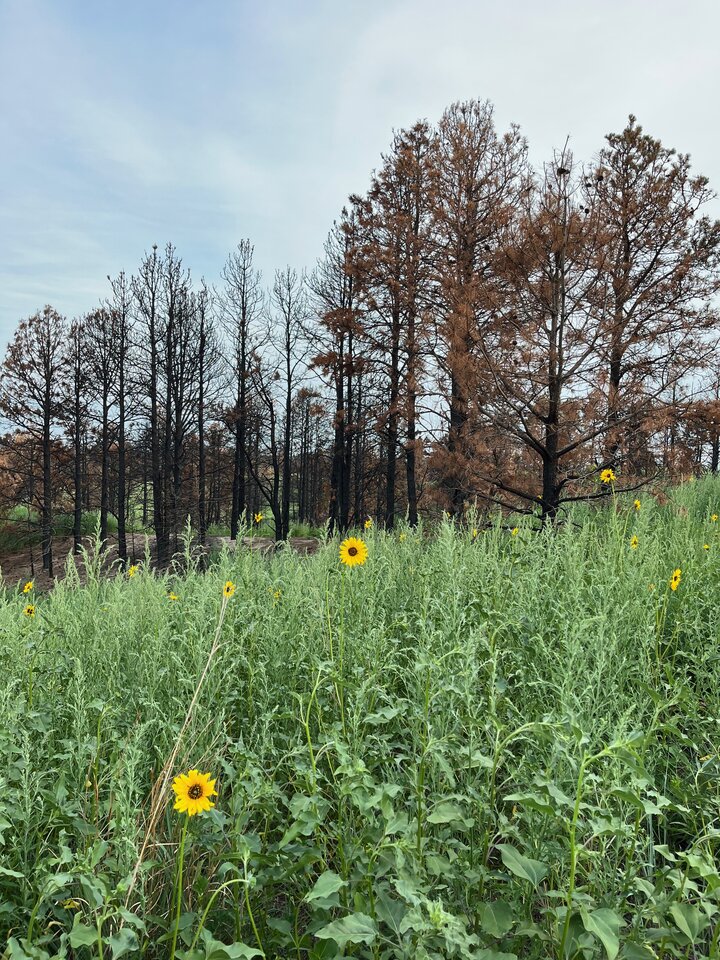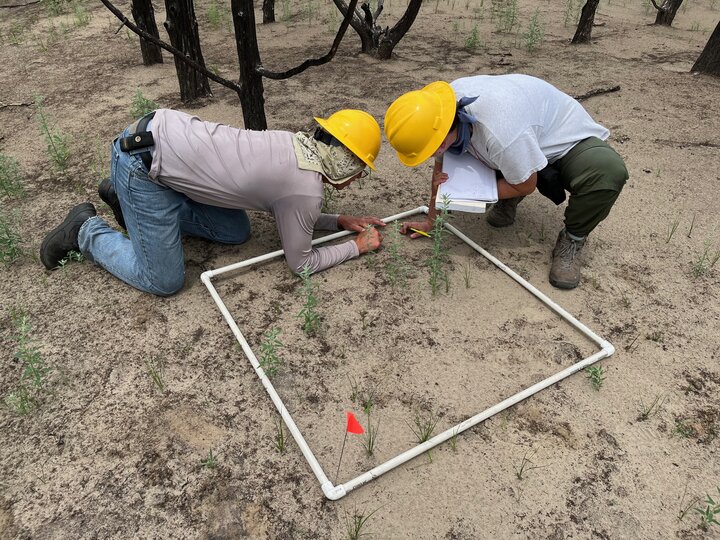See our work:
We installed six phenocams at various sites in the Nebraska National Forest to capture images every 15 minutes. The following video is a compilation of one photo per day from each phenocam. To view the complete time-lapses, visit the 'Data' page in 'Resources.'

The Bovee Wildfire: A Case Study in Ecosystem Recovery and Management
The Nebraska National Forest: A Rare Garden Spot
The Nebraska National Forest, established in the semi-arid grasslands of Nebraska in 1903, is the largest man-made forest in the United States. It encompasses over 25,000 acres of hand-planted conifers characterized by needle-like leaves and pine cone seeds.

Situated within the Nebraska Sandhills, which cover 50,000 km2, the semi-arid grasslands are home to the largest stabilized fragile sand dunes in the western hemisphere and house a crucial water resource, the Ogallala Aquifer. The Sandhills support grazing on 95% of the area, offering essential ecosystem services and contributing significantly to Nebraska's $12 billion annual livestock industry, a cornerstone of the state's agricultural sector.
The Bovee Wildfire
In October 2022, the Bovee Wildfire tore through over 19,000 acres of the Nebraska National Forest near Halsey, Nebraska. This wildfire resulted from a particularly dry year and an overturned all-terrain vehicle, which marked one of the most devastating incidents in the state's history.
After the fire, our team of researchers from the University of Nebraska-Lincoln commenced a study of the evolving ecosystem in the fire-affected area. The primary aim is to ascertain the forest's natural recovery and determine which ecosystem would foster the healthiest and most biodiverse environment.
Does the system recover to grassland or woodland, and what interventions may mediate those transitions?
The wildfire presents an unprecedented turning point for the hand-planted biome, creating unique recovery conditions. Researchers are currently uncertain as to whether the forest will naturally recover to grassland or woodland. With no precedent and lacking a handbook, data from previous vegetation and soil assessments in both grassland and forest plots will serve as the linchpin in discerning whether the natural grassland will reestablish itself or if the forest has sufficiently integrated into the land's development.
Given the historical significance of the Nebraska National Forest, proactive efforts are underway to quantify the impact of wildfire on the recovery of these distinctive mature forests, among the oldest in Nebraska and the wider region. The objective is to implement ecosystem management strategies to preempt unfavorable changes that could potentially affect the 22% of tree-invaded areas in the Sandhills.
A central research query revolves around ascertaining the optimal environmental approach, whether it entails encouraging the forest to recover in its experimental form or promoting a return to grassland to better serve local ecology. An ongoing extensive study aims to quantify the impact of a hand-planted forest on the local ecology, particularly concerning the incursion of woody species into grasslands.
Eastern Red Cedar: An encroachment issue
The encroachment of the Eastern red cedar into grasslands and forests at a rate of approximately 25,000 acres annually between 2010 and 2015 presents a pressing concern. This invasive species has been found to heighten the risk of catastrophic wildfires, resulting in considerable ecological, human, and economic repercussions.
Consequently, areas affected by woody species invasion are prone to undergo shifts in ecosystems and the services they provide, including diminishing species richness and diversity, reduced forage availability, and alterations in fire regimes, among other repercussions.
The Study
Our primary research focus is evaluating the desirability of the original grassland compared to maintaining the experimental man-made forest. We aim to work with land managers to find and implement the best strategy for navigating the recovery of the affected area.
This website will be a central repository for references, updates, and resources relating to the study. It aims to enhance our comprehension of post-wildfire ecosystem recovery and effective ecosystem management. Findings will directly inform decisions regarding the potential reintroduction of trees in the fire-impacted area or the facilitation of grassland restoration.

Our goal
To delineate the post-fire ecosystem that will manifest and identify any mitigating measures that should be advocated in conjunction with land managers and governmental bodies to uphold biodiversity in this exceptional landscape.
Our objectives
1) Determine the system that will re-emerge post-fire - grassland or woodland
2) Assess environmental drivers (e.g., climate, soil health, and water availability) that determine the type of vegetation and regime shifts post-fire.
3) Implement advanced data analysis tools to detect signals of recovery or regime shifts.
This research was made possible through the USDA McIntire-Stennis Capacity Grant
(All site photos unless otherwise specified are courtesy of Dana Fritz)
